ORIGINS
This history of the Labour Party celebrates our achievements from its emergence in 1900 as a parliamentary pressure group. We are right to regard as historic the establishment of the National Health Service, the enshrining in law of equality of opportunity for all and the creation and maintenance of an empowering welfare state – all Labour achievements.

Equally important has been the development of Labour as a mass membership party in the 1920s and 1930s, the modernisation of our campaigning techniques in the 1980s and the election of 101 Labour women MPs in 1997.
However, the lessons we should draw from our history are not all positive. Labour was in government for just 23 of its first 100 years. On occasions we have also been the victim of division and disunity which, as we all know, has cost us dear in electoral terms. It has allowed the Tories to win and undermine our achievements.
Our history is one to be proud of. Since our formation, Labour has grown from nothing into a formidable political organisation and one which has achieved major social and political reforms during the 20th century. The agenda for the future is to ensure that our values become rooted in British culture so that we can achieve lasting social, economic and political change in Britain.
Labour founding Conference How the Labour Party began
The Labour Party was created in 1900: a new party for a new century. Its formation was the result of many years of hard effort by working people, trade unionists and socialists, united by the goal of changing the British Parliament to represent the interests of everybody. Ignored by the Tories and disillusioned with the Liberals, a coalition of different interests came together to push for change at a Conference on Labour Representation in London’s Memorial Hall in February 1900.
For many years the new organisation struggled to take root in the British political system. The conference of February 1900 had not even created a proper ‘party.’ Instead the new body was called the Labour Representation Committee and it had no members, only organisations affiliated to it. In the elections of that year, the new group made little ground. Indeed Labour’s leaders worked closely with the 1906-14 Liberal Governments, and relied on their majority to agree measures to help Labour, such as the Trade Disputes Act of 1906, and the payment of MPs in 1911.
But while Labour in Parliament was “hanging from the coat-tails” of the Liberals, Labour in the country was growing apace. The number of constituency parties affiliated rose from 73 in 1906 to 179 by 1914 and before the outbreak of war prevented the expected election, Labour was prepared to field a record number of candidates. When the Liberal Party split in 1916, the Labour Party was well placed to make a challenge for power.
First government, 1924
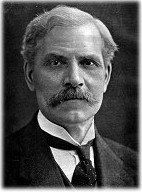
Ramsay MacDonaldThe first real taste of political office came only a year later. Stanley Baldwin’s Conservatives had fought the election on a single issue: protectionism. The Tories lost almost 90 seats, down from 345 to 258. Baldwin had failed to obtain the mandate he sought and declined to form a government, so despite winning 67 fewer seats than the Tories, Ramsay MacDonald was asked by the King to form a government.
The first Labour government had modest objectives and held office for only a few months, but its achievements should not be underestimated. Even without a proper majority in the House of Commons, legislation was still passed on housing, education, unemployment and social insurance. Yet, dependent on Liberal support to remain in power, the government fell as a result of a political row about the actions of Attorney-General Sir Patrick Hastings. In the subsequent election, the Daily Mail published the infamous Zinoviev letter, a forgery which alleged there were links between Russian communists and the British Labour Party. With an atmosphere of fervent anti-communism, Labour lost 40 seats and the Tories were returned to power.
Second government, 1929
Second GovernmentFive years later, following the election in May 1929, Labour was back in office, albeit still as a minority administration. MacDonald was again Prime Minister, with iron-founder and trade unionist Arthur Henderson as Foreign Secretary and Margaret Bondfield as Minister of Labour, the first-ever woman cabinet minister of any party. The government was dominated by the world economic crisis, precipitated by the October 1929 Wall Street crash. MacDonald’s government put in place a number of measures to try and resolve the problem of rising unemployment.
However, these had little effect and in 1931 unemployment caused a crisis within the cabinet. Politically unable to either cut benefits or increase taxes to deal with the financial problem caused by high unemployment, the government was split and fell. Yet MacDonald did not tender his resignation to the King, but instead offered to form a National Government with Liberals and Conservatives. From being one of its founding fathers, Ramsay MacDonald had turned his back on the party and was seen to have betrayed Labour. He was expelled in September 1931; but in the following election, MacDonald’s coalition won a large majority. The Labour Party was reduced to 52 seats. It was the party’s nadir.
War and the 1945 landslide
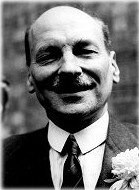
Clem Attlee. With the disastrous election result in 1931, Labour spent almost a decade recovering lost ground. The Party’s new generation, including Ernest Bevin, leader of the Transport and General Workers Union, and the academic Hugh Dalton, led the campaign to renew Labour’s fortunes. Clement Attlee, a major in the First World War who had worked in the London slums, became leader in 1935. With the invasion of Poland by Germany in September 1939, and the replacement of Chamberlain by Churchill as Prime Minister in 1940, Labour was invited to join the government in a war-time coalition. Attlee and Arthur Greenwood, the former minister for health, entered Churchill’s cabinet, and were quickly followed by Ernest Bevin, who was made Minister for Labour.
When the war in Europe ended in May 1945, Churchill called a general election for July. Labour’s manifesto, Let Us Face the Future, captured the public mood for change. It argued that Britain must not return to the poverty and lack of work of the 1930s. Labour pledged to destroy the five ‘evil giants’ of want, squalor, disease, ignorance and unemployment. The result was a landslide to Labour, who won 393 seats in Westminster. For the first time, Labour had a majority and had full opportunity to implement its programme of reform.
The wilderness years

By 1950 the Labour government had achieved most of its pledges in Let Us Face the Future. Indeed the party appeared to have run out of steam. The election of that year saw Labour’s majority cut to only five, and the new government could not remain in office for long. Attlee dissolved Parliament again in October 1951 and by a quirk of the British electoral system, Labour gained its highest ever share of the vote (48.8 per cent) but won fewer seats than the Tories.
The Harold Wilson era
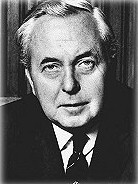
Labour was returned to office on a platform of modernisation and reform. The party’s manifesto, The New Britain, focused on the need for economic and social transformation. In many ways, this is what Wilson’s administration achieved. The period was one of openness and social liberalism, with the legalisation of many taboo practices such as divorce, homosexuality and abortion, and the ending of capital punishment.
However, the failure of the government to devalue the pound until 1967 is believed to have restricted the level of economic growth and the new Department for Economic Affairs never succeeded in implementing its National Plan. The party’s majority was increased to 97 in 1966, when Wilson went to the country asking for a mandate to finish the job. With this endorsement, he was able to implement reforms on a range of issues including steel nationalisation and the development of comprehensive education. Wilson’s 1964-70 governments achieved much of what they set out to do.
The 1970s
Against pollsters’ predictions, Labour lost the 1970 General Election to the Conservatives under Ted Heath, who in 1971 fulfilled his ambition to take Britain into the Common Market. However, far from delivering his promise to ‘cut prices at a stroke’, Heath’s term saw rising inflation and unemployment, and an energy crisis leading to industrial action and the three-day week.
Harold Wilson was returned as Prime Minister in February 1974, but in a minority government which put our legislative programme at the mercy of Liberals and Ulster Unionists. Wilson called another election in October 1974 to consolidate his position, which produced a Labour majority of four. After making modest progress in stabilising the country, Harold Wilson shocked both party and nation by resigning as Prime Minister in March 1976, claiming that he had ‘always planned to retire at 60’. Not long after Wilson’s retirement, however, his mental deterioration from Alzheimer’s disease began to be apparent. He rarely appeared in public after 1985 and died in 1995.
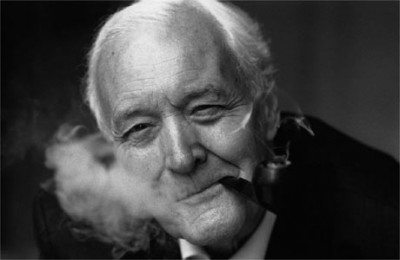
Wilson was replaced as premier by his Foreign Secretary James Callaghan, who had also served as Chancellor and Home Secretary in previous Wilson administrations (the only PM to hold all three major offices of state). Callaghan presided over one of the most difficult periods of Government for Labour, with rampant inflation, crippling industrial action led by increasingly militant trade unions, and culminating in the disastrous ‘winter of discontent’ on 1978-9, when rubbish went uncollected and dead bodies unburied. The 1979 General Election saw the Conservatives under new leader Margaret Thatcher returned with a majority of 44 seats.
Kinnock and the policy review
Neil KinnockWith Labour heavily defeated in the 1979 election, the party began a new period of soul-searching. Internal debates about the party constitution dominated, and led eventually to the forming of a breakaway group, the Social Democratic Party, in 1981. Michael Foot, the veteran left-winger, was elected leader but he was hampered by divisions within the party and proved unable to reverse Labour’s decline in support. With Labour moving further to the left, the 1983 election resulted in a crushing defeat. Labour gained 27.6 per cent, its lowest showing since 1918 and not much above the Liberal/SDP Alliance.
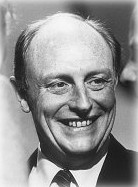
Hope for a revival in Labour’s fortunes came from Welsh MP Neil Kinnock, who replaced Michael Foot as leader in 1983. Kinnock first sought to sideline the extreme left within the party, such as the group Militant, and then to restore Labour’s image with the general public. His speech to the 1985 Party Conference, where he attacked Militant from the platform, was seen as a sign of the new Labour leader’s courage and commitment to change. This was followed by changes to Labour’s image, headed by a new Campaigns and Communications directorate under Peter Mandelson. A visible sign of the changes afoot was the replacement of the party’s emblem – the red flag – by a red rose at the 1986 conference. Even with such changes, Kinnock was unable to recover much ground and Labour still lost the 1987 election heavily. More thorough-going reform was necessary and therefore the party began a process of policy review. The outcome, Meet the Challenge, Make the Change, ended Labour’s commitment to unilateral nuclear disarmament, high taxation and old-style nationalisation.
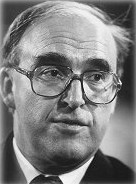
Labour’s fourth successive election defeat was a major shock to the party. Kinnock’s successor, Scottish lawyer John Smith, promised to continue the process of reform, including tackling the trade union block. At the 1993 Party Conference Smith won the vote on One Member One Vote (OMOV), removing direct union representation in parliamentary selections, by the smallest of margins, and largely due to the last-minute speech by John Prescott. If he was careful in his dealings with the party, in the Commons Smith was less restrained.
Immediately after the election the Tories were wrong-footed by the crisis in sterling and exit from the Exchange Rate Mechanism. Black Wednesday as 16 September 1992 became known, was a gift to Smith, who used his considerable parliamentary skills to attack the Conservatives. With record-breaking (for the time) local election results in 1994, John Smith was rightly optimistic about the future of the Party. “A chance to serve, that is all we ask”, Smith told a gathering of Labour supporters on 11 May 1994. The event was to be his last. Early the next morning he suffered a massive heart attack. Just as with Gaitskell in 1963, Labour had lost a leader on the verge of power.
New Labour

Tony Blair and forming New Labour. The ensuing leadership contest saw the election of Tony Blair, the youngest-ever leader of the Labour Party. Blair was widely known to be a moderniser and his leadership election statement was clear that Labour must be reformed radically if it was to win office again. Yet for any still in doubt, Blair showed his true intentions in his first speech to party conference as leader, when he called for the updating of Clause IV of the party’s constitution.
While opposed by some traditionalists, the proposed change won overwhelming support at a special conference in April 1995. This was followed in 1996 by the publication of New Labour, New Life for Britain, the draft manifesto that was discussed and voted upon by party members across the country. Labour’s agenda was fully costed, to avoid the arguments over tax that had dogged them in 1992, and centred on five pledges: education; crime; health; jobs and economic stability. Party members gave the proposals clear endorsement – with 95 per cent backing the plans.
The 1997 election campaign saw the Tories in decline – over sleaze, tax rises and division. Labour’s campaign, by way of contrast, was smooth and efficiently run. The party targeted 90 marginal and 216 key seats – the constituencies it had to win if it was to gain a majority. In the event new Labour was shown to have underestimated its popular appeal, winning a landslide total of 418 Labour MPs, including a record 101 Labour women, and a majority of 179.
As a Labour Prime Minister, Tony Blair gave new direction to the country with the introduction of a National Minimum Wage, one million more jobs, smaller class sizes in primary schools, and the biggest ever sustained investment in the NHS.
On 7 June 2001 Tony Blair led Labour to a second successive victory in a General Election, winning by another landslide. Labour won a majority of 167.
Four years later, on 5 May 2005, Labour achieved a first in its history: a third consecutive term in government. Labour had run a positive campaign on investment in public services including the slogan “If you value it, vote for it” in the run up to polling day. The Tories, in contrast, led by Michael Howard had run a negative campaign, largely on immigration and crime.
Labour’s majority was 67. On the steps of Downing Street the next day, Tony Blair said: “It’s a tremendous honour and privilege to be elected for a third term and I’m acutely conscious of that honour and that privilege.
When I stood here first eight years ago I was a lot younger but also a lot less experienced.
Today as well as having in our minds the priorities that people want, we, I, the government, has the knowledge, as well as the determination and commitment, to deliver them.”
Tony Blair and John Prescott both announced that the 2006 Annual Conference would be their last as Leader and Deputy Leader of the Party and in May and June 2007 the party held its first leadership election for thirteen years.
For the first time whilst Labour has been in government, thousands of party members and members of affiliated organisations were involved in voting and attending hustings meetings around the country, culminating in a Leadership Conference held in Manchester on 24 June 2007.
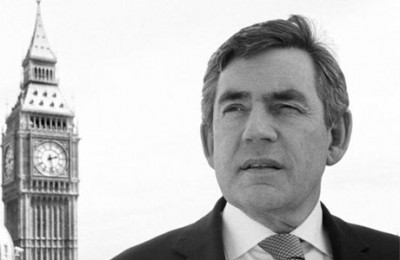
At the conference Gordon Brown was declared Leader of the Labour Party, with Tony Blair describing him as “strong in his convictions and true to his principles”. Following a hard-fought contest against five other candidates, Harriet Harman was elected Deputy Leader.
Three days later, on 27 June 2007, Tony Blair stepped down after ten years as Labour’s longest-serving Prime Minister and the ninth-longest serving in our nation’s history. At the final Cabinet meeting, Gordon Brown led tributes to Tony Blair by remarking that people would look back in 100 years time and see his achievements which had changed this country for good and that “whatever we achieve in the future, will be because we are standing on your shoulders.”
Following his appointment as Prime Minister, Gordon Brown stood on the steps of Downing Street and made a pledge to the British people: “On this day I remember words that have stayed with me since my childhood and which matter a great deal to me today, my school motto: “I will try my utmost”. This is my promise to all of the people of Britain and now let the work of change begin.””Britain faces huge challenges but if we work together, we can rebuild Britain as One Nation.
ED MILIBAND “Britain is at a fork in the road.”
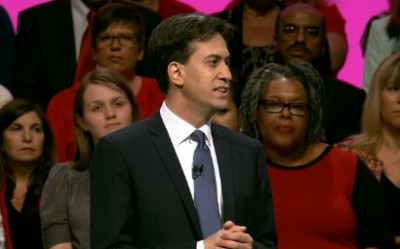
The first and most serious challenge was the international financial crisis of 2008, and although the Tories had argued for banking deregulation, which was the long-term cause of the crisis, they were able to blame Labour in the general election of 2010. In addition Labour were hit by residual resentment over the Iraq War – which the Tories had also supported – and the Tories won a small majority which allowed them to govern in coalition with the Lib.Dems.
Labour’s response was to elect Ed Milliband as leader, who began to distance the party from a New Labour agenda that was seen by some as too managerial. Although the Party made some gains in the general election of 2015, the two most striking results were the collapse of the Lib-Dems, who were blamed for conniving in Conservative cuts, and the rise of the SNP, who, despite losing an independence referendum earlier in the year, were able to gain the greatest electoral benefit from anti-Conservative feeling in Scotland.
ohhhhhh Jeremy Corbyn
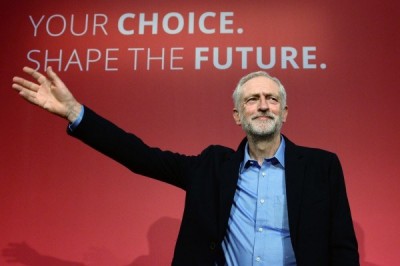
Ed Milliband’s consequent resignation led to a leadership contest which drew in large numbers of people who had previously felt excluded from the traditional world of politics and wanted to see the Party challenge the harsh inequalities imposed on society by the most privileged. Jeremy Corbyn was elected as leader with a promise to introduce a new kind of politics that reached out beyond the Westminster club and tackled the increasingly desperate needs of ordinary people: renationalisation, opposition to nuclear weapons, and a simple call for peace and fairness were once again on the agenda. Jeremy’s straight talking and honest politics won the day and he became the new leader with the largest mandate in Labour history. The media immediately launched a massive attack on him … what on earth could they fear from a cycling enthusiast from Islington who has an allotment.
Keir We Go
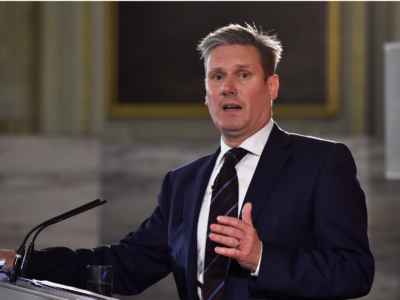
Corbyn moved the party into a clear socialist direction and almost won a great victory in 2017 but 2 years later lost heavily in the Brexit election.
In 2020, Keir Starmer was elected to take the party on the next part of it’s journey.
